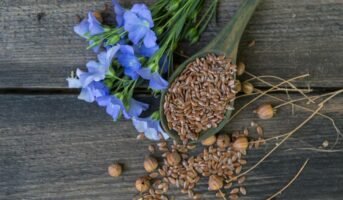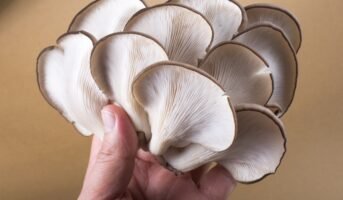Planting seeds: Meaning
When seeds are planted, they are given a chance to germinate and generate new stems and roots that may be inserted into the soil to support the growth of the plant. Numerous crops are cultivated and harvested in agriculture using this method. It is a sustainable method of enhancing the environment for plants. However, the procedure is only effective if you are skilled at planting seeds.
Know about What are seed balls and how do they work?
Planting seeds: How can small seeds be planted?
It might be tempting to overlook a wide variety of plants with tiny seeds while planning your garden. Brassica or carrot seeds, which are as little as a grain of dust, to the miniscule tropical orchid seeds, which resemble nothing more than a part of airborne dust, all require special care to achieve the best germination rates, seedling arrangement, and production.
When using these tiny seeds to grow your garden or seed trays, consider the following options:
- With a toothpick: A single microscopic seed may be delivered to the soil surface using a damp toothpick, where it can then be gently scraped off onto the soil.
- Premix with Media: Combine your small seeds with a fine dry soil, such as sand. If sand is not available, you can smooth and finely crush some dirt in a grinder or food processor. As you plant, fewer seeds will land in a single location as they get dispersed over the media. Once the medium and seeds are thoroughly combined, all that is left to do is toss the mixture along your row, gently massage it into place, and water.
Now that you are aware of how to plant small seeds, maybe you won’t have any problems.
see also: all about Flaxseed, Facts, Benefits, uses
Planting seeds: How do you plant seeds outside?
To start, you must prepare your garden bed by digging a part of the soil into which to lay your seeds for sowing, and then covering the seeds with the dirt; this method is also known as direct sowing.
Planting seeds: How can seeds be sown indoors?
Additionally, seeds can be sown inside. Seeds should be placed in a container that has been filled with soil compost. Make sure the container has openings so that the water can escape. Place the stems in the sunshine as soon as they begin to emerge. Avoid direct sunshine and overwatering.
Simple instructions for planting seeds
Harvest the first step’s seeds from plants and vegetables.
After the flowering season is finished, take your chosen seed off the plant and store it for later use.
Pick a day that is dry and sunny to collect the seeds.
Instead of using plastic bags to shake the seeds, use a paper bag or envelope since plastic holds on to moisture and encourages the formation of mould. Pods are essentially an alternate representation of the ovary in some plants. Pods that are “spring-loaded” can twist and riven open themselves, scattering seed, therefore pick those seeds before this happens. You can riven them open by hand and collect the seeds.
Before you’re ready to plant the seeds, keep them somewhere cold and dry to keep them.
When should you gather the seed?
When the ovaries are mature is when the seed should be harvested. They will get crisp, dried out, and beige as they ripen. The ovary of some plants, such as marigolds, can occasionally divide, exposing clusters of seeds. The ovary of other floras resembles a capsule.
Choose plates or containers, then drill holes if necessary
In good seed plates that you purchase from a store, you may plant seeds. As an alternative, you might use a hollow food container, saucepan, cookie tin, or anything similar. Make some holes with a nail or drill if the container’s bottom doesn’t already have any. Make holes that are spaced far apart. This enables water to escape from the container and prevents it from gathering, which can result in an excessively wet seed compost.
Add sterilised seed compost to container
If possible, use sterilised seed compost, such as this seed starter potting mix from Amazon. You may also purchase a multipurpose seed compost, but avoid using dirt that has been dug up from your orchard because it will be clumpy, full of pests and diseases, and dry fast. However, in my opinion, the greatest way to increase the likelihood of germination is to purchase quality compost.

Source: Pinterest
Moisturise the compost’s surface
Use a fog spray to moisten the compost’s surface. You might use a watering can, but if it has little holes in the sprinkler rose, the compost would overflow.
See also: 21 best flowers for your garden
Evenly distribute the seeds over the compost.
With your finger, strew tiny seeds from your palm over the compost. Mini seeds should not be covered in soil as this will encumber them. Larger seeds can be scattered with compost after being placed one at a time on the compost.
Store in a warm location post sealing
Cover the seed tray with glass, a magazine, a slate, some plastic, plywood, or anything you have, and then put it somewhere warm. By keeping the seeds in the dark and preventing the compost from drying up, this promotes germination. 64F is the ideal temperature for sprouting (18C).
It can be too cool for sprouting if you live in a climate with harsh winters, therefore you should put the plate in a plant propagator instead (or otherwise locate it in a hot area close to a hot water reservoir or near your furnace).
After two days, check the seed plate, and keep looking for sprouting activity.

Source: Pinterest
Make the seedlings visible after development
The seedlings must be exposed to light as they grow or they will rapidly become straggly with extremely long, thin stems, thus it is crucial to do so.
Avoid direct sunlight since it can quickly dry up the compost’s surface, especially if it’s windy, and cause the sprouts to die. Till a couple sets of leaves appear, it would be wise to keep them out of direct sunshine.
Place the seedlings in individual pots
Seedlings can be moved onto separate pots or plates once they have developed a few “real leaves” and are large enough to handle without discomfort. Since some sprouts are relatively little and inconspicuous, it is best to wait until they are more developed. Create a hole in the compost of the new container with your finger or a popsicle stick, drop the seedling into the hole, and gently push the soil back over the roots.
Keep them out of direct sunlight.
If it is hot and sunny, this is important. When roots are exposed after transplantation because you weren’t able to keep a small amount of compost trapped in them, they might dry out quickly. Keep seedlings out of direct sunshine for a week as you wait for the roots to spread into the fresh compost and have a good opportunity of grabbing moisture (but not in an area that is too shady or shadowed). You don’t need to do this if it’s overcast or dreary outside.
Plant outside
Plants can be transplanted to their final location once they have reached the stage where their roots are beginning to emerge from the bottom of the pot.
FAQs:
Which method—watering from the top or the bottom—is preferable?
The soil surface is kept drier by bottom watering, which aids in preventing disease issues.
What does harden off mean?
Hardening off simply refers to a plant's adaptation to environmental conditions. The correct quantity of light, moisture, and nutrients have been lavished upon seedlings produced inside.
Housing News Desk is the news desk of leading online real estate portal, Housing.com. Housing News Desk focuses on a variety of topics such as real estate laws, taxes, current news, property trends, home loans, rentals, décor, green homes, home improvement, etc. The main objective of the news desk, is to cover the real estate sector from the perspective of providing information that is useful to the end-user.
Facebook: https://www.facebook.com/housing.com/
Twitter: https://twitter.com/Housing
Email: [email protected]











